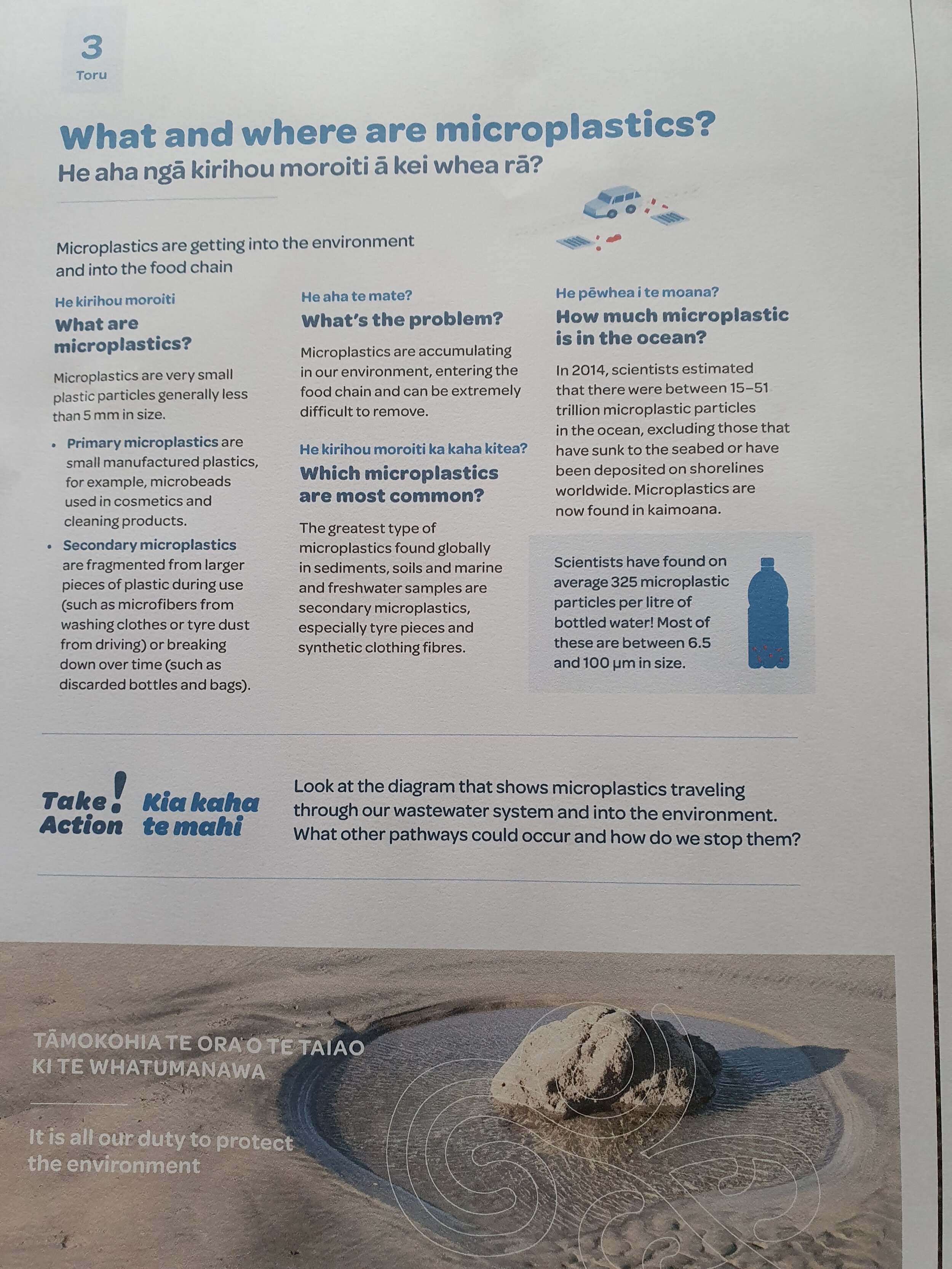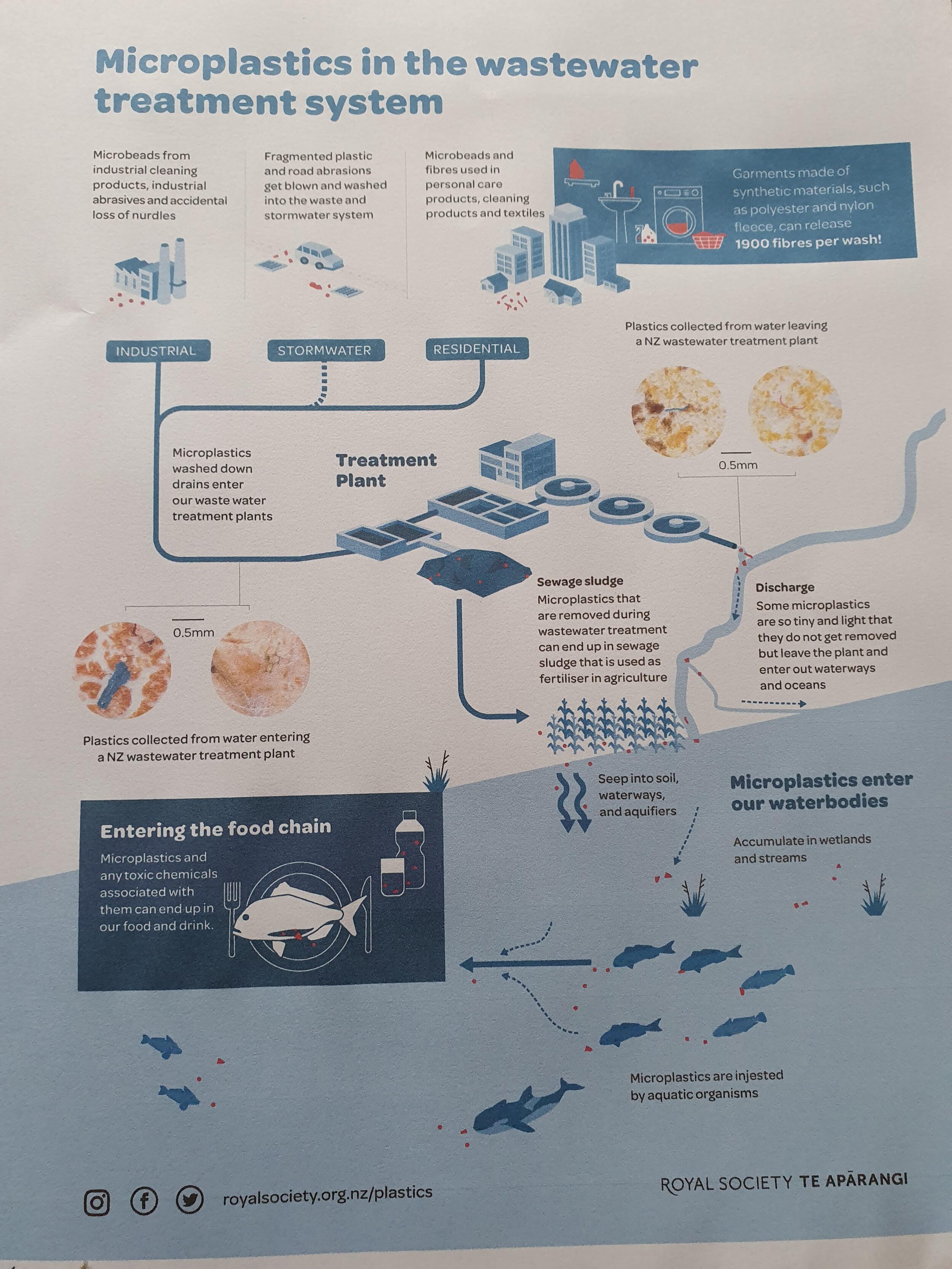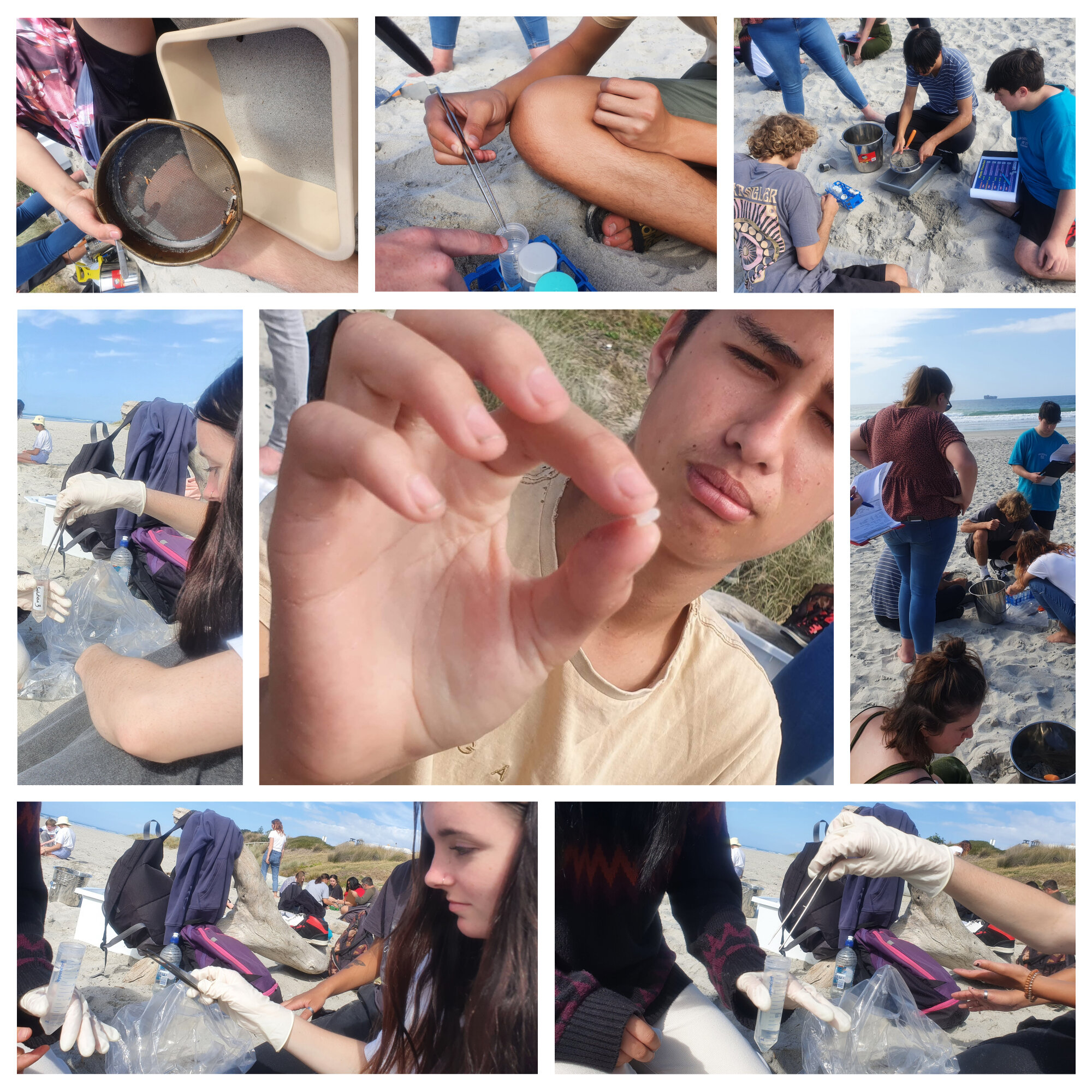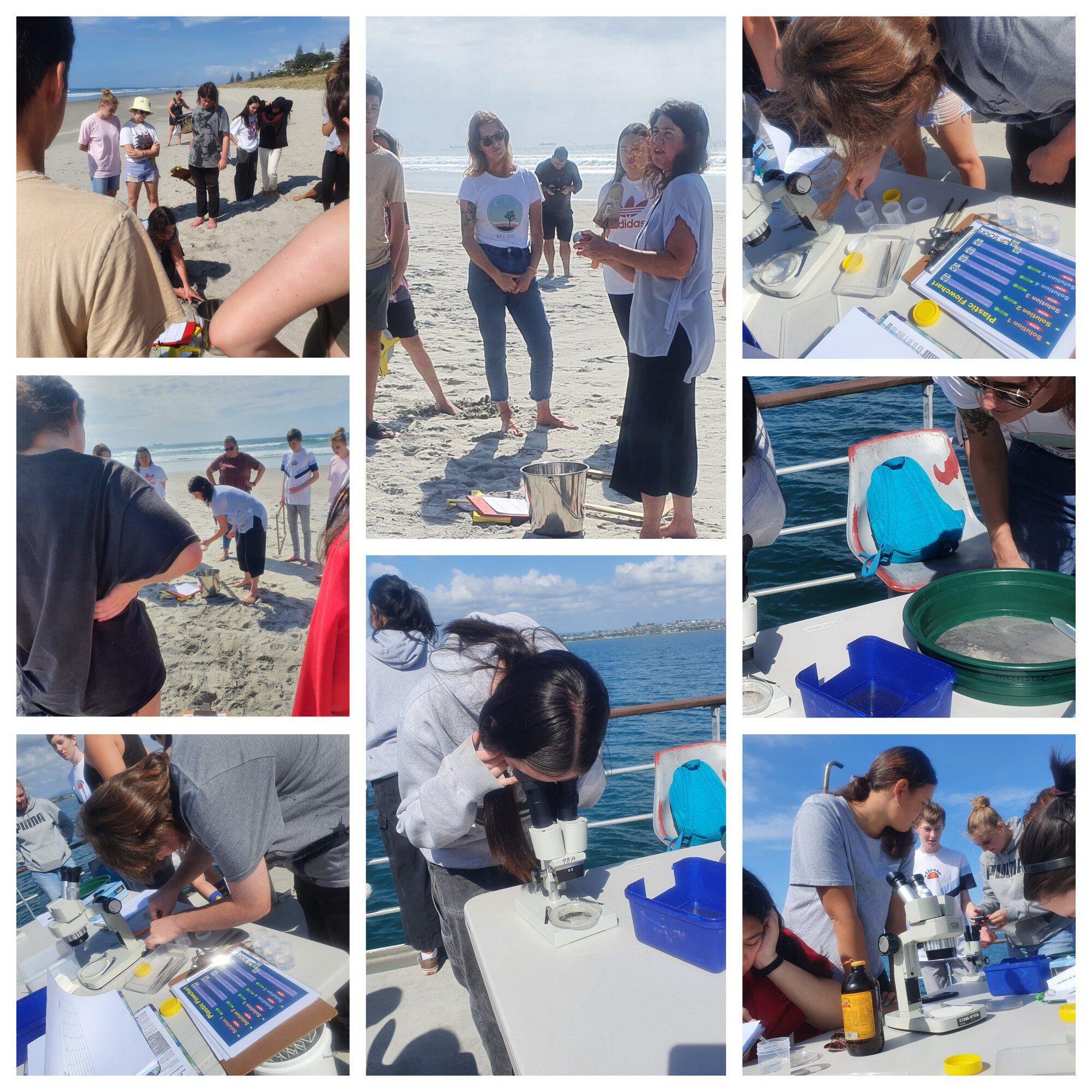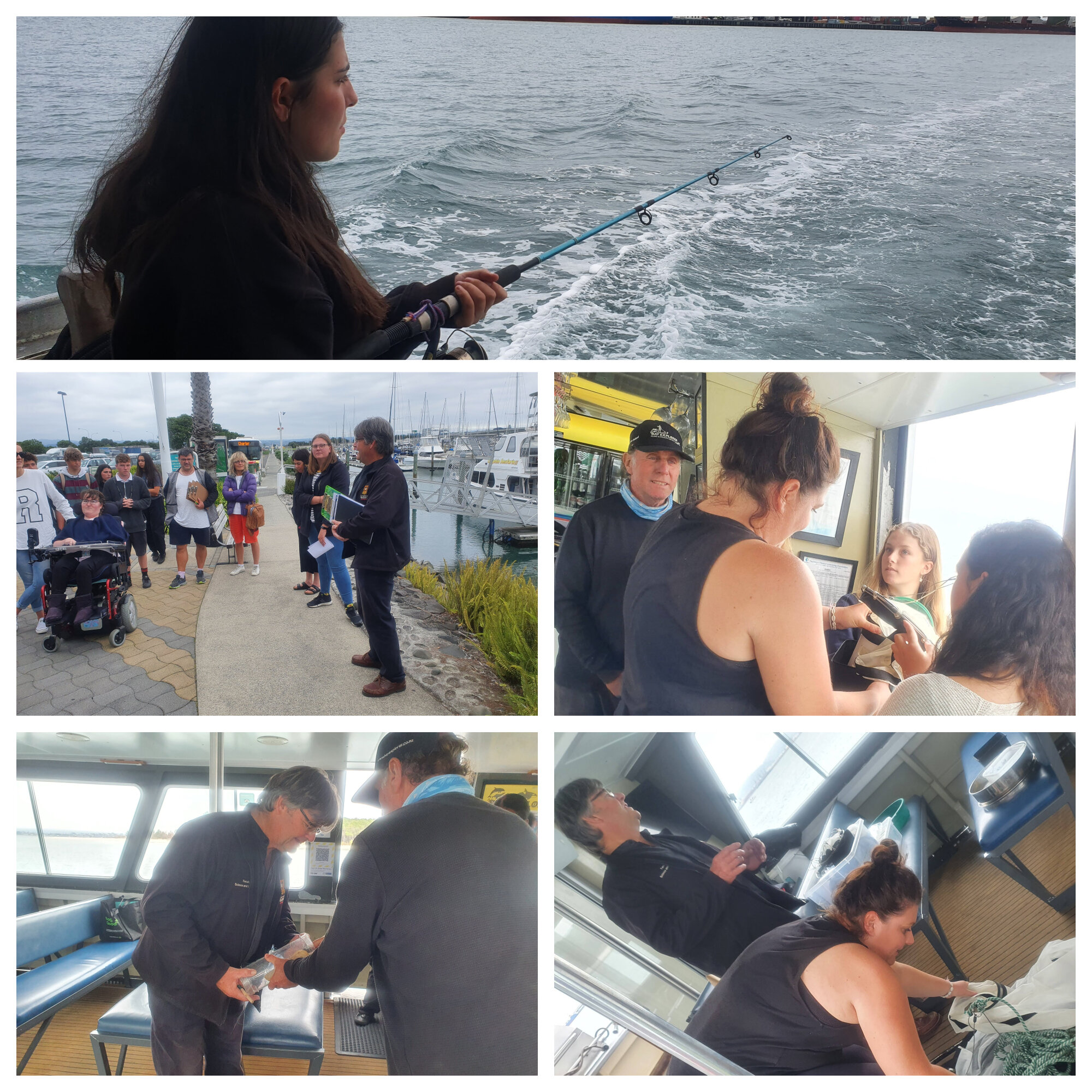Microplastic engagement Tauranga
PTC Trust partnered with SCION scientist Kate Parker and University of Waikato’s Marine and coastal ecosystems team leader Professor Chris Battershill as we conducted an exploration for microplastics along the Tauranga harbour and Omanu beach. Our trip offshore was captained by Brandon Stone of Bay explorers who navigated us across the currents to launch our investigation.
Youth were set to learn about microplastics and their effect on our environment.
Microplastics are less than 5mm in size and result from the breakdown of larger plastic fragments or from manufacturing of plastic beads. Royal society of New Zealand describes microplastics as a real problem in NZ’s fresh and marine water environment.
Professor Chris Battershill holds the inaugural Bay of Plenty Regional Council Chair in Coastal Science, based in Tauranga. Our Mt Manganui students were given the opportunity to hear the incredible work being done by the Coastal Marine Group in the Faculty of Science and Engineering.
Professor Chris described the effect of microplastic on our marine ecology; which was very fitting as his research focuses on marine ecology and environmental science, and he was responsible for the establishment of the first dedicated marine biodiscovery teams in Australia and New Zealand.
Youth learnt that in a balanced ecosystem, phytoplankton are the food source for a diverse range of fish, shrimps, snails, whales, etc. Whilst zooplankton that feeds on phytoplankton could range from only five millimetres long to one-thousandth of this size. The small sizes of microplastics enables these to be ingested by our marine life and pose risk to humans.
Marine Plankton
Professor Chris and team identified the following species throughout the day’s exploration:
Microplastics were discovered on the beach and in the ocean, inspiring the youth to take a strong message back to peers, colleagues and whanau of the potential threat of these microparticles to aquatic life.

